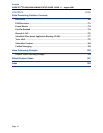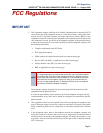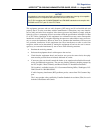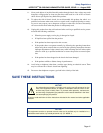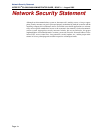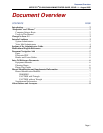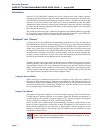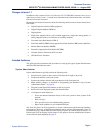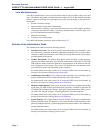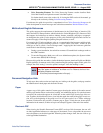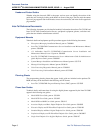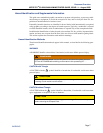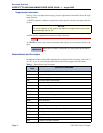
Document Overview
INTER-TEL
®
CS-5200/5400 ADMINISTRATOR GUIDE, ISSUE 1.1 – August 2005
Page 2 Computer Science Roots
Introduction
The Inter-Tel CS-5200/5400 Communication Servers Administrator Guide contains informa-
tion that System Administrators and Voice Mail Administrators need to know about the Inter-
Tel 5000 Network Communications Solutions family of products. The guide focuses on system
hardware and software features and on the use of System Administrator and Voice Mail
Administrator phone features to perform typical administrator tasks and activities. Instructions
for using non-Administrator phones and the features other endpoints appear in the user guides
that come with those devices.
This section describes the guide’s content and organization, the intended audience, typographi-
cal conventions used to identify safety hazards and important information, related Inter-Tel,
Inc. technical documents, and a list of abbreviations used in the guide.
“Endpoints” and “Phones”
As digital, wireless, and computerized communication methods have evolved, the language of
telecommunications has had to change to keep pace. Not long ago, voice and modem-encoded
text were communicated from one telephone instrument to another across a global network of
copper wire, optical fiber, microwave antennas, and satellites. More recently, however, the
development of the Internet and of World Wide Web (www) sites have introduced a multime-
dia dimension to information and made it all more readily accessible through computer net-
working. As this evolution has occurred, new words and meanings have been introduced to
describe the new methods and equipment used for communicating.
Telephone systems that once provided only phone service to consumers have become “commu-
nication platforms” that support many devices that people can use for personal and business
communication. Phones now share communciation space with personal digital assistants
(PDA), with wireless phones capable of text messaging, taking photos, and recording video,
with fax machines that transmit and receive messages across Internet Protocol (IP), and with
“soft” phones that are displayed and used from computer screens.
Computer Science Roots
When referring to communication protocols in computer science, the term “endpoint”
describes an entity on one end of a Transport Layer connection. The Transport Layer is the
Transmission Control Protocol/Internet Protocol (TCP/IP) layer in the Open Systems Intercon-
nect (OSI) network model. Utilizing the TCP/IP layer standard, Internet servers send and
receive packets of data across the World Wide Web.
Usage in This Manual
This manual uses the term “endpoint” to describe the entire category of devices that the Inter-
Tel 5000 family of products supports. In this context, digital and IP phones are endpoints, as
are data modules, fax machines, computer telephony (CT) gateways, Single-Line Adapters
(SLA), IP Single-Line Adapters (IP-SLA), and answering machines.
And, to promote clear communication and understanding, commonly accepted names of end-
points are used as appropriate. In particular, desktop IP endpoints are also referred to as IP
phones. Digital endpoints are also referred to as digital phones. Wireless endpoints are also
referred to as wireless phones. And, analog single line endpoints are also referred to as single
line phones or single line sets.
NOTE
In the manual and in Database (DB) Programming, a phone may also be called a
“station” when reference to the phone and its environment are intended. Or, it may
be called “device” in the most general sense.



